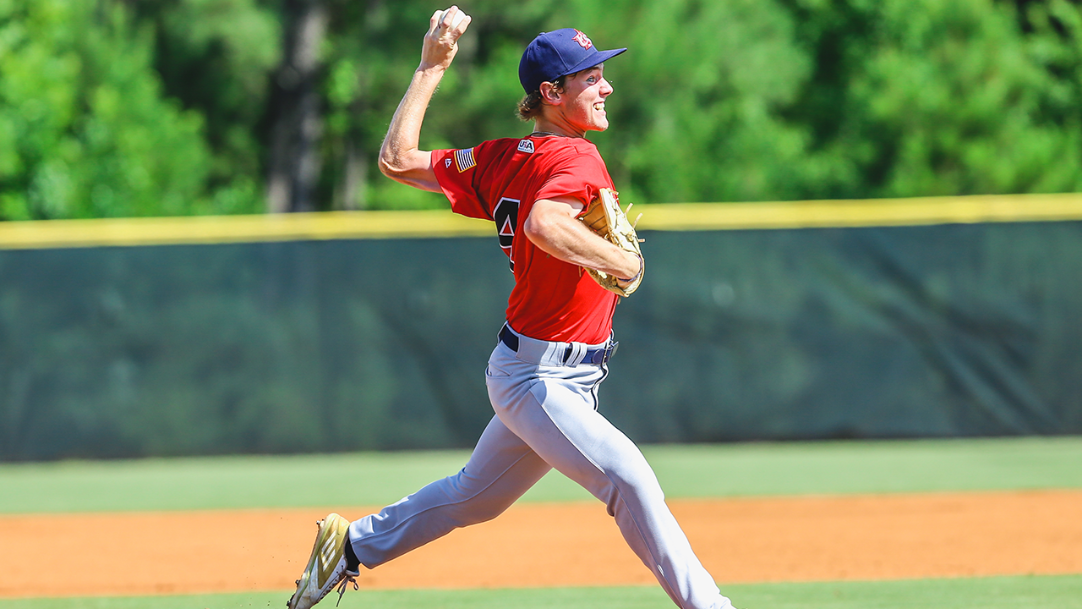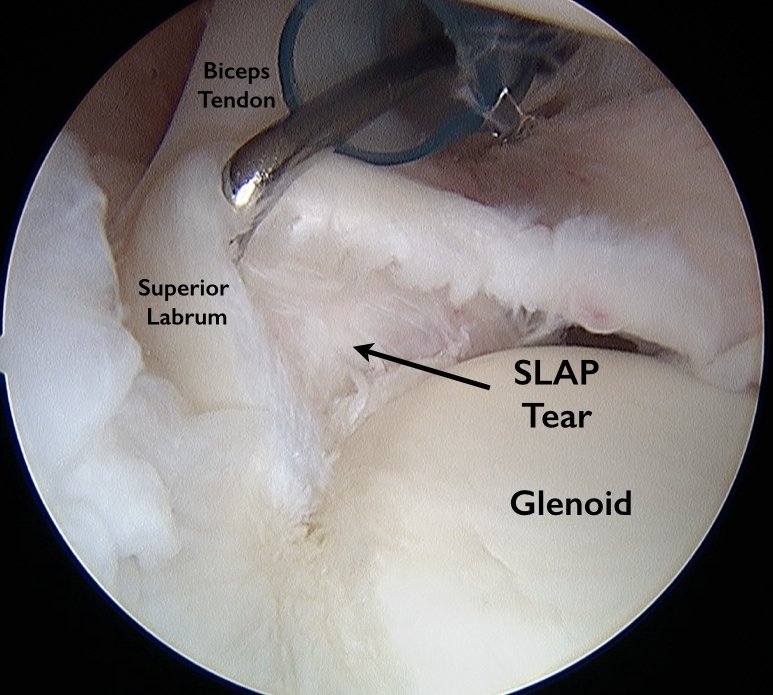
SLAP Tear
Superior Labrum, Anterior to Posterior (SLAP) Tear
The labrum is a dense and fibrous cartilage tissue attached circumferentially around the shoulder glenoid (socket). This cartilage aids in keeping the humeral head (ball) located within the glenoid cavity- similar in nature to the bumpers on a pool table. It also supports the shoulder joint by reinforcing the muscles and tendons of the rotator cuff and serves as a ligament attachment site. There are many ways in which the labrum can become damaged:
It can become completely detached from the bone with a shoulder dislocation (see Shoulder Instability)
The latticework structure of the fibrous connective tissue can become torn and is commonly seen among the older population
The biceps tendon can be partially or completely torn from its labral attachment site superiorly on the glenoid.
It is this final pathway involving the superior labrum and biceps anchor that we are discussing when we refer to “SLAP” tears.
SLAP tears are commonly seen after both traumatic injuries to the shoulder as well as in chronic degenerative/aging changes to the shoulder joint. Additionally, SLAP tears are frequently seen in overhead athletes such as baseball/softball and tennis players as well as swimmers. In these particular athletes, proper diagnosis and treatment can be somewhat complex as many seemingly “abnormal” findings in the superior labrum may be the body’s natural adaptive process for allowing the athlete to perform optimally in such sports. For that reason, careful evaluation of the shoulder is recommended by an experienced sports and shoulder surgeon for this group of patients.
Orthopedic Surgeon and Sports Medicine specialist, Dr. Jonathan Koscso, successfully diagnoses and treats patients in Sarasota, FL and the surrounding Gulf Coast region who have experienced a SLAP tear.
For a comprehensive overview of the relevant anatomy, biomechanics, and treatment considerations for a SLAP tear, the below video is quite helpful.
Symptoms of a SLAP Tear
Shoulder pain worsened with lifting heavy objects or overhead shoulder motions is the most common complaint of a labral or SLAP tear. Other symptoms can include decreased range of motion and strength in the shoulder as well as a grinding or clicking sensation within the shoulder joint.
Overhead athletes often experience deep shoulder pain when the arm is in the overhead position. For example, baseball pitchers tend to have deep, vague pain when their throwing arm is in the fully cocked position. Alternatively, a swimmer may experience similar pain when their arm is in the recovery phase before water re-entry.
Non-Surgical Treatment of SLAP Tears
Conservative treatment options are often all that is needed to successfully resolve a labral or SLAP tear for most patients. A combination of rest and non-steroidal anti-inflammatory medications (ibuprofen, naproxen, meloxicam, etc.) may be used for pain management. When the pain has dissipated, a physical therapy program to correct shoulder imbalances and restore shoulder strength and range of motion is often recommended. This treatment can even be successful in high-level athletes.
Surgical Treatment of SLAP Tears
In the event of severe traumatic SLAP tears (especially if associated cysts have developed around the shoulder), or if conservative therapy is unsuccessful, surgical intervention may be necessary. Dr. Koscso may recommend a shoulder arthroscopy, a minimally invasive procedure using a small camera (arthroscope), to visualize the muscles, tendons, and ligaments of the shoulder joint. Based upon the intra-operative findings with a shoulder arthroscopy, Dr. Koscso can determine the best repair option among the following techniques:
SLAP repair. This surgical method attaches the torn labrum to the glenoid (socket) with special surgical anchors that are secured within the bone. This is a routine surgical approach especially for younger patients.
Debridement. The simplest of these procedures, debridement removes the torn or frayed portions of the labrum. This approach is reserved for patients with small labral tears that do not involve the biceps tendon.
Biceps tenodesis. This surgical technique is recommended for severe SLAP tears that involve the biceps tendon. This procedure separates the biceps tendon from its attachment site on the labrum, the damaged portion of the tendon is excised, and then the repaired tendon is reattached to the humerus (upper arm bone) with special surgical anchors that are secured within the bone.
Similar to the treatment algorithm for labral tears associated with shoulder instability, the specific surgical treatment for SLAP tears is variable from patient to patient and involves the age, activity level, injury mechanism, and anatomical findings seen at the time of surgery. For a thorough evaluation by an experienced sports and shoulder surgeon, we recommend scheduling a consultation with Dr. Koscso.
About the Author
Dr. Jonathan Koscso is an orthopedic surgeon and sports medicine specialist at Kennedy-White Orthopaedic Center in Sarasota, FL. Dr. Koscso treats a vast spectrum of sports conditions, including shoulder, elbow, knee, and ankle disorders. Dr. Koscso was educated at the University of South Florida and the USF Morsani College of Medicine, followed by orthopedic surgery residency at Washington University in St. Louis/Barnes-Jewish Hospital and sports medicine & shoulder surgery fellowship at the Hospital for Special Surgery in New York City, the consistent #1 orthopaedic hospital as ranked by U.S. News & World Report. He has been a team physician for the New York Mets, Iona College Athletics, and NYC’s PSAL.
Disclaimer: All materials presented on this website are the opinions of Dr. Jonathan Koscso and any guest writers, and should not be construed as medical advice. Each patient’s specific condition is different, and a comprehensive medical assessment requires a full medical history, physical exam, and review of diagnostic imaging. If you would like to seek the opinion of Dr. Jonathan Koscso for your specific case, we recommend contacting our office to make an appointment.





